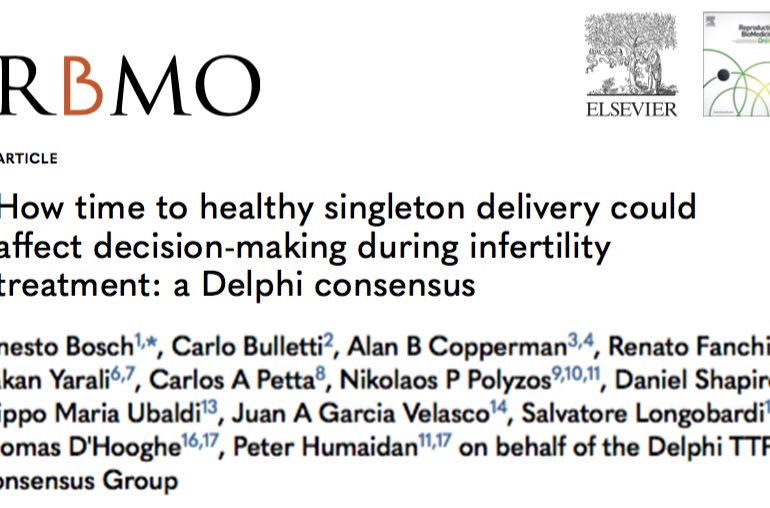
How time to healthy singleton delivery could affect decision-making during infertility treatment: a Delphi consensus
Ernesto Bosch, Carlo Bulletti, Alan B Copperman, Renato Fanchin, Hakan Yarali, Carlos A Petta, Nikolaos P Polyzos, Daniel Shapiro, Filippo Maria Ubaldi, Juan A Garcia Velasco, Salvatore Longobardi, Thomas D’Hooghe, Peter Humaidan, on behalf of the Delphi TTP Consensus Group
Reprod Biomed Online – 2019 Jan; 38(1):118-130. doi: 10.1016/j.rbmo.2018.09.019. Epub 2018 Nov 7.
ABSTRACT
Research question: How might time to healthy singleton delivery affect decision-making during infertility treatment?
Design: This was a Delphi consensus investigating expert opinion that comprised three steps. In Step 1, 12 experts developed statements. In Step 2, 27 experts (including 12 from Step 1) voted (online survey) on their agreement/ disagreement with each statement (providing reasons). Consensus was reached if ≥66% of participants agreed/ disagreed. Statements not reaching consensus were revised and the process repeated until consensus was achieved. In Step 3 details of the final agreed statements were communicated.
Results: Twelve statements were developed, and consensus (agreement) was reached on all after one round of voting.
Conclusions: Time to healthy singleton delivery should be taken into consideration when making decisions related to infertility treatment, and it is important that fertility treatment is provided in a timely manner, avoiding over- or under-treatment. In all subfertile women <40 years old, IVF outcomes could be optimized by performing up to six single-embryo transfers and certain procedures might reduce time to healthy singleton delivery. These procedures include preimplantation genetic testing for aneuploidies, frozen replacement cycles immediately after failed fresh cycles and use of gonadotrophin-releasing hormone antagonists. Finally, the number of oocytes retrieved should be maximized to increase cumulative live birth rate.